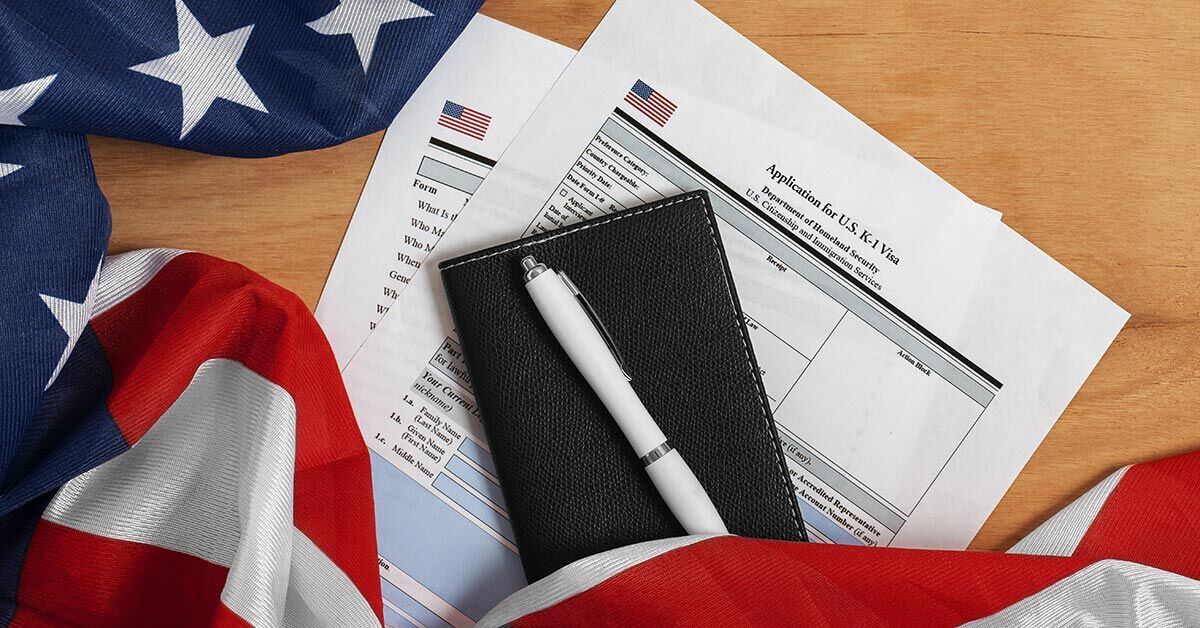
In a rapidly evolving world, where love knows no borders, the K1 visa stands as a testament to the commitment of couples separated by nationality. For those seeking to bring their foreign fiancé(e) to the United States, understanding the K1 visa requirements is crucial. In this article, we’ll break down the essentials of the K1 visa process for the year 2024, offering practical insights without drowning you in legalese.
Understanding the K1 Visa
The K1 visa, commonly known as the fiancé(e) visa, allows U.S. citizens to bring their foreign fiancé(e) to the United States for the purpose of marriage. It’s a bridge that spans the distance between two hearts, uniting them on American soil. To embark on this journey, you’ll need to navigate a series of requirements with precision.
Financial Eligibility
One of the key elements in the K1 visa process is demonstrating financial eligibility. The U.S. citizen petitioner must showcase an income level at or above the poverty line, ensuring the ability to support the foreign fiancé(e) upon their arrival. As of 2024, the specific income requirements may vary, so it’s crucial to stay updated with the latest figures provided by the U.S. Citizenship and Immigration Services (USCIS).
Form I-129F: The Petition
The journey begins with the filing of Form I-129F, the Petition for Alien Fiancé(e). This form serves as the foundation of the K1 visa application process and should be submitted to the USCIS. Ensure that all the required information is accurately filled out, as any discrepancies may lead to delays or denials.
Supporting Documentation
Accompanying the petition, a comprehensive set of supporting documents is essential. This may include proof of the petitioner’s U.S. citizenship, evidence of the intent to marry within 90 days of the foreign fiancé(e)’s arrival, and documents verifying the financial eligibility. Keep in mind that clear and concise documentation can significantly expedite the application process.
Medical Examination and Background Check
Once the petition is approved, the foreign fiancé(e) must undergo a medical examination by an approved panel physician. This examination ensures that the individual meets health requirements for entry into the United States. Additionally, a thorough background check is conducted to ensure compliance with U.S. immigration laws.
Health requirements for entry into the United States are primarily assessed through a medical examination conducted by an approved panel physician. The purpose of this examination is to ensure that the immigrant does not pose a public health risk and is physically capable of residing in the U.S. Below are some key aspects of the health requirements:
Vaccinations
- The U.S. Centers for Disease Control and Prevention (CDC) has specific vaccination requirements for immigrants. These typically include vaccinations against diseases such as measles, mumps, rubella, polio, tetanus, diphtheria, pertussis, influenza, hepatitis B, and varicella (chickenpox), among others.
- The panel physician will review the immigrant’s vaccination history and administer any missing vaccinations if necessary.
Tuberculosis (TB) Screening
TB screening is a crucial part of the medical examination. Immigrants are generally required to undergo a TB test, and if the results are positive or if there is evidence of active TB, further evaluation and treatment may be necessary.
Physical Examination
A comprehensive physical examination is conducted to assess the overall health of the immigrant. This may include examinations of the heart, lungs, eyes, ears, nose, and throat.
Mental Health
While there isn’t a specific mental health examination, applicants are generally asked about their mental health history. If there are concerns about mental health that could impact public safety or the applicant’s ability to care for themselves, additional evaluation may be required.
Communicable Diseases
The medical examination aims to identify and address any communicable diseases that could pose a public health risk. If an immigrant is found to have a communicable disease of public health significance, entry to the U.S. may be denied.
It’s important to note that the health requirements may be subject to change, and applicants should consult the most recent guidelines provided by the U.S. Department of State and the CDC. Additionally, the specific requirements can vary based on the type of visa and the immigrant’s country of origin.
Applicants undergoing the medical examination should provide accurate and complete information about their health history to the panel physician. Failure to disclose relevant health information or comply with vaccination requirements may lead to delays or denial of the visa. If there are concerns about meeting the health requirements, consulting with an immigration attorney is advisable.
Consular Processing
Upon successful completion of the medical examination and background check, the case is forwarded to the U.S. embassy or consulate in the foreign fiancé(e)’s home country. Consular officers will conduct an interview to assess the authenticity of the relationship and the legitimacy of the intended marriage. Be prepared to provide evidence of the relationship, such as photographs, emails, and other correspondence.
Fiancé(e) Visa Interview
The interview is a critical step in the process, where both the U.S. citizen petitioner and the foreign fiancé(e) must attend. It’s a chance for the couple to demonstrate the bona fide nature of their relationship. Genuine communication and honesty are key during this phase, as consular officers seek to ensure that the marriage is not a means to circumvent immigration laws.
Final Steps: Arrival and Adjustment of Status
Once the K1 visa is granted, the foreign fiancé(e) can travel to the United States. However, the journey doesn’t end there. Within 90 days of arrival, the couple must marry, and the foreign spouse can then apply for adjustment of status to become a lawful permanent resident.
Conclusion
In the intricate world of immigration, the K1 visa process can seem daunting, but with careful navigation and attention to detail, couples can successfully unite on U.S. soil. The key is to approach the requirements with diligence, keeping abreast of the latest updates and ensuring that each step is met with precision. As we step into 2024, let love know no boundaries, and may the journey to a shared future begin with a clear understanding of the practicalities involved in obtaining a K1 visa.






No Comment